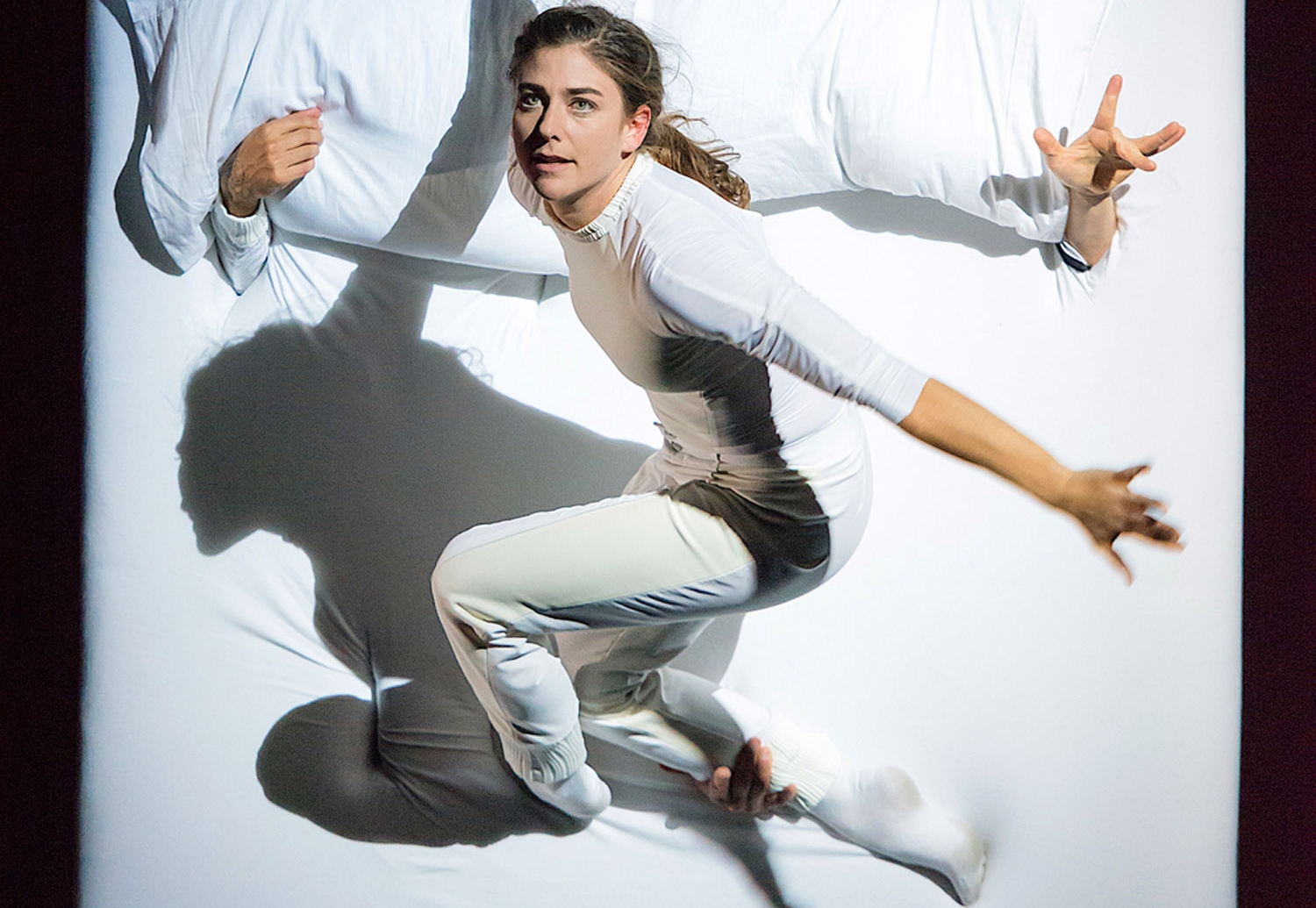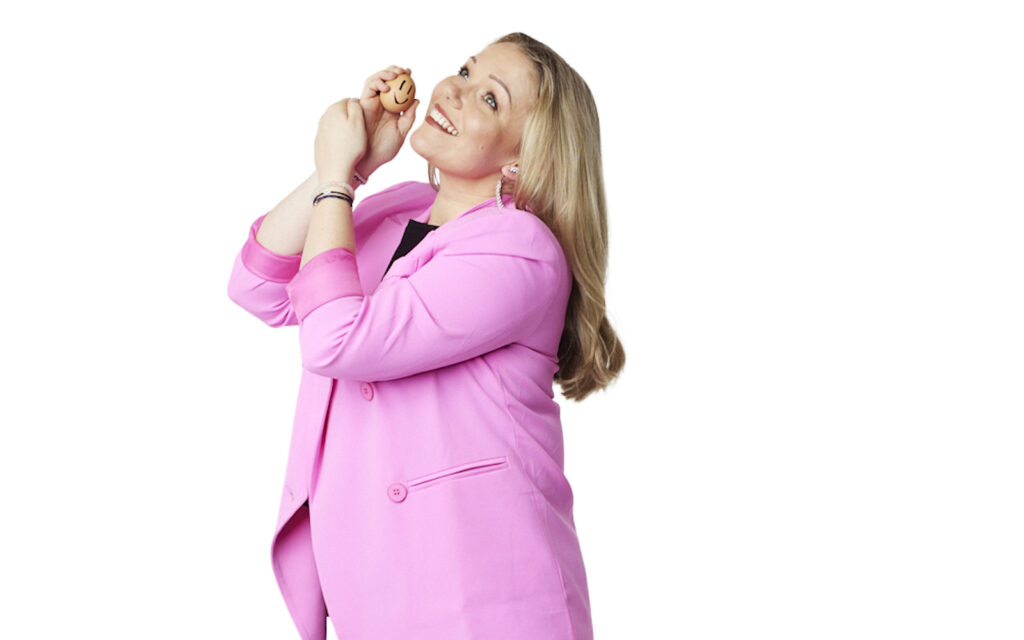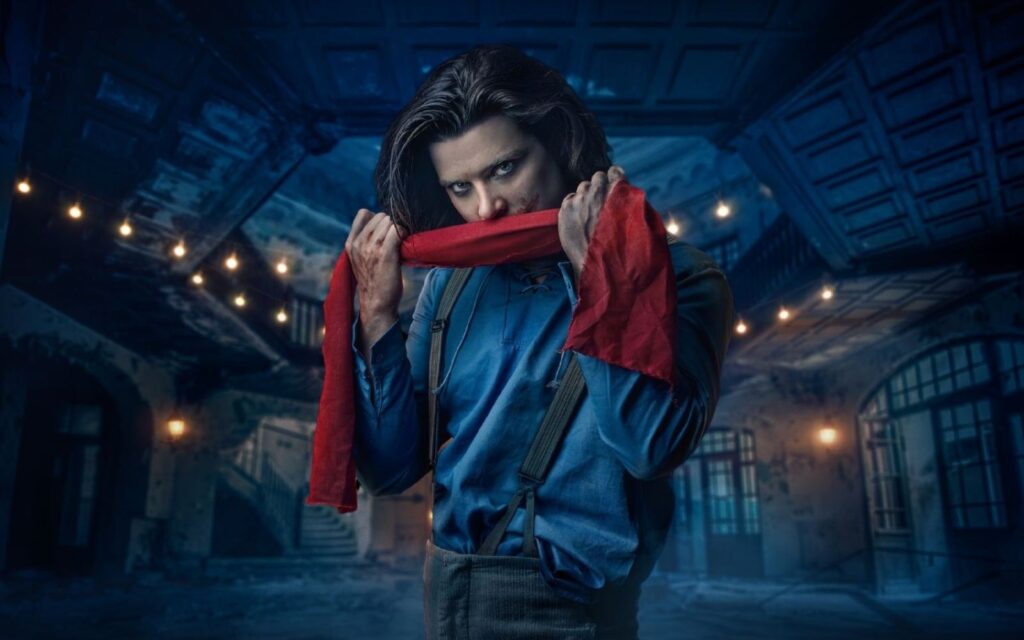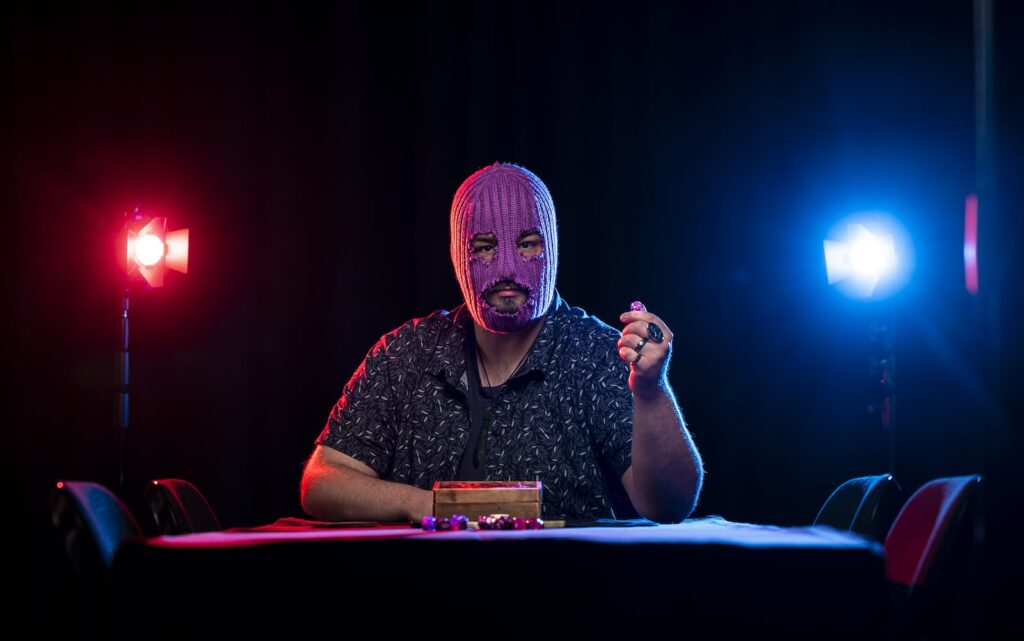Transcending beyond the common understanding of movement, the show will take audience members on a two-hour journey, demonstrating the sheer strength and unique capabilities of the human body.
“Les 7 Doigts De La Main translates to the 7 fingers on the hand. It’s a play on words, a twist on a French idiom, the five fingers of the hand,” says creator and artistic director of Triptyque, Samuel Tetreault. “When you combine all these fingers, we can achieve things that would otherwise be impossible.”
The show offers audiences three impossible encounters, or parts, to metaphorically witness the dexterity of a 7 fingered hand. This involves creating a platform with 72 holes for rods to be placed in any configuration, pushing both choreographer and performer to rethink the relationship between the human body and the stage.
From this idea, the performance titled Variations 9.81 was born. Featuring a quintet of virtuoso hand acrobats who balance upside down on square wooden pommels, the three choreographers who created Triptyque were invited to reimagine the collision of these performance and circus mediums, two worlds that Tetreault describes as being joint in unison.
“As dancers, acrobats [and] circus performers, we are all connected to the ground in a very different way,” Tetreault says. “You are dependent on each other but you are also able to free yourself from your own personal limitations in a place such as this.
“Without gravity, the ball that we throw in the air would not come back down and it would be pointless to balance them. But I wanted to experiment with gravity in a way that would in a literal and metaphorical way.”
The group, who first established themselves in 2002, were brought together by their collective desire to offer a brand new form of circus performance – one that blurred the traditional understandings of dance and acrobatic athleticism – all in a raw, gritty, and undeniably human way.
“I’ve always trained as a circus performer, and I’ve always been fascinated with dancing and movement,” says Tetreault. “Both by going to see as many shows as I can, and taking a lot of workshops and dance training on the side of my circus career. I feel the two are interrelated.”
After being in the circus discipline for over 20 years and performing over 1,500 shows of Cirque du Soleil’s production Alegria, Tetreault became one of the co-founding artistic directors of The 7 Fingers, the Montreal based circus collective. Triptyque caused Tetreault to think about production in a new light.
“When creating Triptyque I had to think about, ‘what is gravity? Is it heavy? Is it light? There are heavier moments of life and lighter moments of life: fantasy, dreams, movement. That was an essential key. I wanted all three parts to have a sense of progression between these ideas.”
In the duet Anne & Samuel, a piece exploring the effect of gravity on moving bodies, performers use crutches as extensions of the body, highlighting how we adhere to the laws of physics, and how this principle can be defied.
“When I look at myself, I’m surprised how I almost look like an animal or an insect. The way that I move, the way that I shift, the use of crutches in turning and jumping.”
The third and final part of Triptyque showcases the full driving force of Tetreault’s desire to explore and delve into more artistic ventures. Titled Nocturnes, eight artists daringly flirt between circus and dance, toying at the traditional principles of this art form as we know it.
“Each piece has its own aesthetic universe and its own set of colours and costumes. I really wanted to change and challenge what people think the circus is. It is so much more.”
BY JULIA SANSONE







